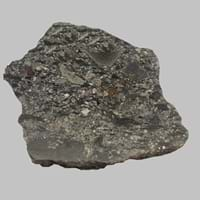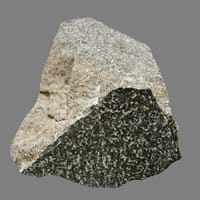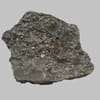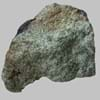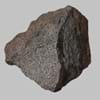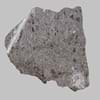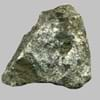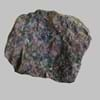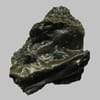Definition
An iron rich extrusive rock found as a member of the alkali basalt magma series
Diabase is a fine-grained igneous rock which is composed mostly of pyroxene and feldspar
Origin
Isle of Mull, Scotland
Germany
Discoverer
Ben More
Christian Leopold von Buch
Etymology
From the name of discoverer, Ben More
From Greek di + base
Class
Igneous Rocks
Igneous Rocks
Sub-Class
Durable Rock, Medium Hardness Rock
Durable Rock, Hard Rock
Other Categories
Fine Grained Rock, Opaque Rock
Fine Grained Rock, Medium Grained Rock, Opaque Rock
Texture
Glassy, Massive, Porphyritic, Scoriaceous, Trachytic, Vesicular
Aphanitic, Granular
Color
Black, Brown, Light to Dark Grey
Dark Grey to Black
Durability
Durable
Durable
Scratch Resistant
Yes
Yes
Appearance
Rough and Dull
Vesicular
Interior Uses
Floor Tiles, Homes, Hotels, Kitchens
Countertops, Decorative Aggregates, Homes, Interior Decoration, Kitchens
Exterior Uses
As Building Stone, Paving Stone, Garden Decoration, Office Buildings
As Building Stone, As Facing Stone, Paving Stone, Garden Decoration, Office Buildings
Other Architectural Uses
Curbing
Curbing
Construction Industry
As Dimension Stone, Cobblestones, Rail Track Ballast, Roadstone
As Dimension Stone, Building houses or walls, Cement Manufacture, Construction Aggregate, for Road Aggregate
Medical Industry
Not Yet Used
Not Yet Used
Antiquity Uses
Artifacts, Monuments, Sculpture
Artifacts, Monuments, Sculpture, Small Figurines
Commercial Uses
Commemorative Tablets, Creating Artwork, Curling
An Oil and Gas Reservoir, Cemetery Markers, Commemorative Tablets, Laboratory bench tops, Jewelry, Sea Defence, Tombstones
Types
Alkaline Basalt, Boninite, High Alumina Basalt, Mid Ocean Ridge Basalt (MORB) and Tholeiitic Basalt
Not Available
Features
Has High structural resistance against erosion and climate, Very fine grained rock
Smooth to touch
Archaeological Significance
Famous Monuments
Data Not Available
Stonehenge in English county of Wiltshire
Famous Sculptures
Data Not Available
Data Not Available
Pictographs
Used
Not Used
Petroglyphs
Used
Not Used
Formation
Benmoreite is a type of Igneous rock which is formed through the cooling and solidification of lava or magma. It forms with or without crystallization, either below the surface as intrusive rocks or on the surface as extrusive rocks.
Diabase forms when molten igneous rock is squeezed up into a vertical crack in other rocks, the crack is usually forced apart and the molten rock cools in the space to form a tabular igneous intrusion cutting across the surrounding rocks and is known as a dike.
Mineral Content
Alkali feldspar, Biotite, Olivine, Plagioclase, Pyroxene, Sodic plagioclase
Augite, Chlorite, Olivine, Plagioclase, Pyroxene, Pyrrhotite, Serpentine
Compound Content
Aluminium Oxide, CaO, Iron(III) Oxide, FeO, Potassium Oxide, MgO, MnO, Sodium Oxide, Phosphorus Pentoxide, Silicon Dioxide, Titanium Dioxide
Aluminium Oxide, CaO, Chromium(III) Oxide, Iron(III) Oxide, Potassium Oxide, MgO, Sodium Oxide, Silicon Dioxide, Sulfur Trioxide
Types of Metamorphism
Burial Metamorphism, Cataclastic Metamorphism, Contact Metamorphism, Hydrothermal Metamorphism, Impact Metamorphism, Regional Metamorphism
Burial Metamorphism, Cataclastic Metamorphism, Contact Metamorphism, Regional Metamorphism
Types of Weathering
Biological Weathering, Chemical Weathering, Mechanical Weathering
Biological Weathering, Chemical Weathering
Types of Erosion
Chemical Erosion, Coastal Erosion, Glacier Erosion, Sea Erosion, Water Erosion, Wind Erosion
Chemical Erosion, Coastal Erosion, Water Erosion
Grain Size
Fine Grained
Fine to Medium Grained
Fracture
Conchoidal
Conchoidal
Porosity
Less Porous
Highly Porous
Luster
Earthy
Not Available
Cleavage
Perfect
Not Available
Specific Gravity
2.8-3
2.86-2.87
Transparency
Opaque
Opaque
Density
2.9-3.1 g/cm3
2.7-3.3 g/cm3
Specific Heat Capacity
Not Available
Resistance
Heat Resistant, Pressure Resistant, Wear Resistant
Heat Resistant, Impact Resistant, Pressure Resistant, Wear Resistant
Deposits in Eastern Continents
Africa
South Africa
South Africa, Tanzania
Europe
Iceland
Germany, Greece, Italy, Scotland, Turkey
Others
Not Yet Found
Antarctica, Greenland
Deposits in Western Continents
North America
Canada, USA
Canada, USA
South America
Brazil
Argentina, Brazil, Colombia, Venezuela
Deposits in Oceania Continent
Australia
Not Yet Found
Central Australia, New Zealand, Queensland, Western Australia
All about Benmoreite and Diabase Properties
Know all about Benmoreite and Diabase properties here. All properties of rocks are important as they define the type of rock and its application. Benmoreite and Diabase belong to Igneous Rocks.Texture of Benmoreite is Glassy, Massive, Porphyritic, Scoriaceous, Trachytic, Vesicular whereas that of Diabase is Aphanitic, Granular. Benmoreite appears Rough and Dull and Diabase appears Vesicular. The luster of Benmoreite is earthy while that of Diabase is not available. Benmoreite is available in black, brown, light to dark grey colors whereas Diabase is available in dark grey to black colors. The commercial uses of Benmoreite are commemorative tablets, creating artwork, curling and that of Diabase are an oil and gas reservoir, cemetery markers, commemorative tablets, laboratory bench tops, jewelry, sea defence, tombstones.
